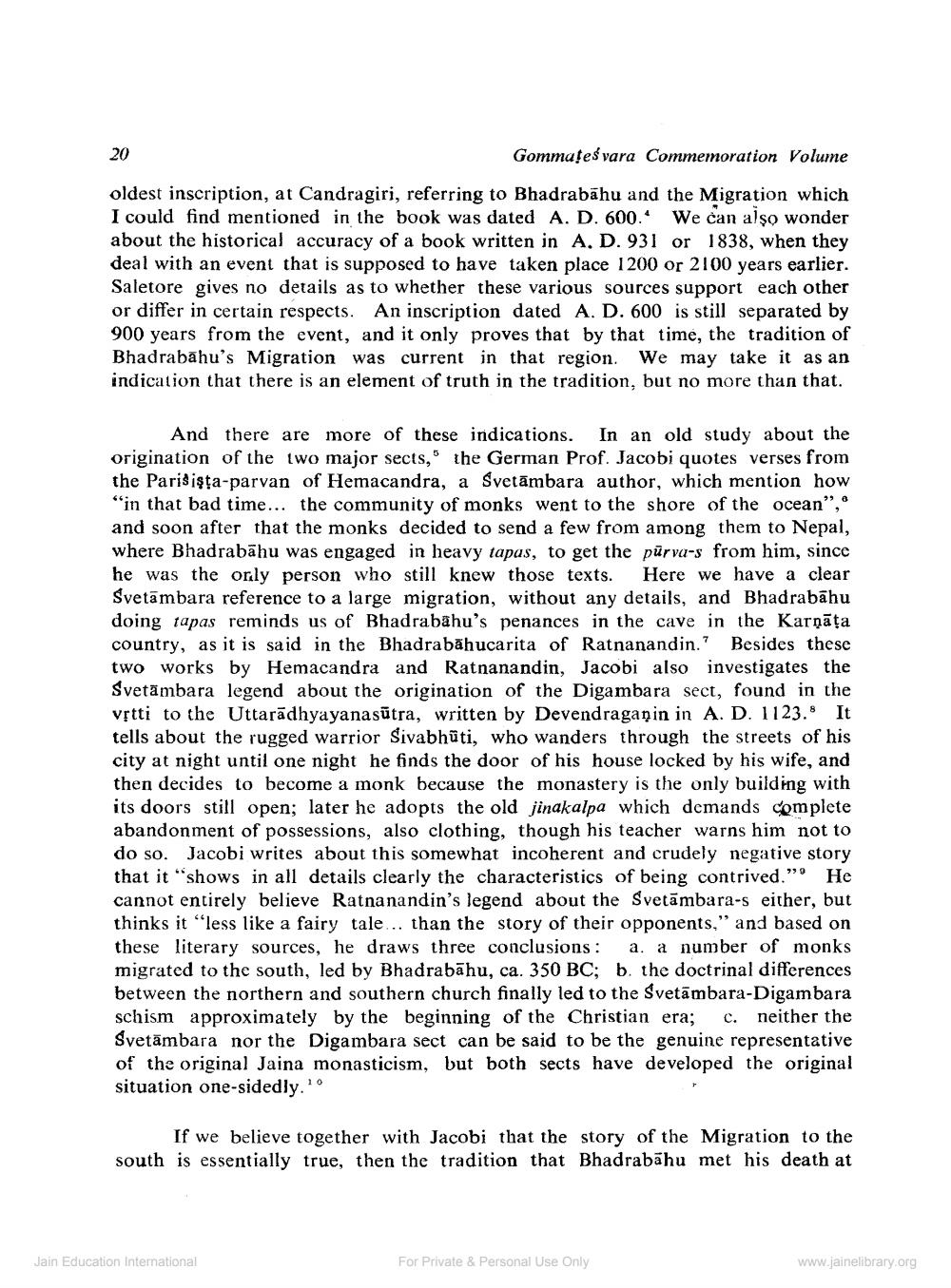________________
20
Gommateśvara Commemoration Volume
oldest inscription, at Candragiri, referring to Bhadrabāhu and the Migration which I could find mentioned in the book was dated A. D. 600. We can also wonder about the historical accuracy of a book written in A. D. 931 or 1838, when they deal with an event that is supposed to have taken place 1200 or 2100 years earlier. Saletore gives no details as to whether these various sources support each other or differ in certain respects. An inscription dated A. D. 600 is still separated by 900 years from the event, and it only proves that by that time, the tradition of Bhadrabāhu's Migration was current in that region. We may take it as an indication that there is an element of truth in the tradition, but no more than that.
And there are more of these indications. In an old study about the origination of the two major sects, the German Prof. Jacobi quotes verses from the Paris işta-parvan of Hemacandra, a Svetāmbara author, which mention how “in that bad time... the community of monks went to the shore of the ocean”, and soon after that the monks decided to send a few from among them to Nepal, where Bhadrabahu was engaged in heavy tapas, to get the pūrva-s from him, since he was the orly person who still knew those texts. Here we have a clear Svetambara reference to a large migration, without any details, and Bhadrabāhu doing tapas reminds us of Bhadrabahu's penances in the cave in the Karņāța country, as it is said in the Bhadrabāhucarita of Ratnanandin.' Besides these two works by Hemacandra and Ratnanandin, Jacobi also investigates the Svetāmbara legend about the origination of the Digambara sect, found in the výtti to the Uttarādhyayanasūtra, written by Devendraganin in A. D. 1123.8 It tells about the rugged warrior Sivabhūti, who wanders through the streets of his city at night until one night he finds the door of his house locked by his wife, and then decides to become a monk because the monastery is the only building with its doors still open; later he adopts the old jinakalpa which demands complete abandonment of possessions, also clothing, though his teacher warns him not to do so. Jacobi writes about this somewhat incoherent and crudely negative story that it shows in all details clearly the characteristics of being contrived." He cannot entirely believe Ratnanandin's legend about the Svetāmbara-s either, but thinks it "less like a fairy tale ... than the story of their opponents," and based on these literary sources, he draws three conclusions : a. a number of monks migrated to the south, led by Bhadrabāhu, ca. 350 BC; b. the doctrinal differences between the northern and southern church finally led to the Svetāmbara-Digambara schism approximately by the beginning of the Christian era; c. neither the Svetāmbara nor the Digambara sect can be said to be the genuine representative of the original Jaina monasticism, but both sects have developed the original situation one-sidedly.
If we believe together with Jacobi that the story of the Migration to the south is essentially true, then the tradition that Bhadrabāhu met his death at
Jain Education International
For Private & Personal Use Only
www.jainelibrary.org




